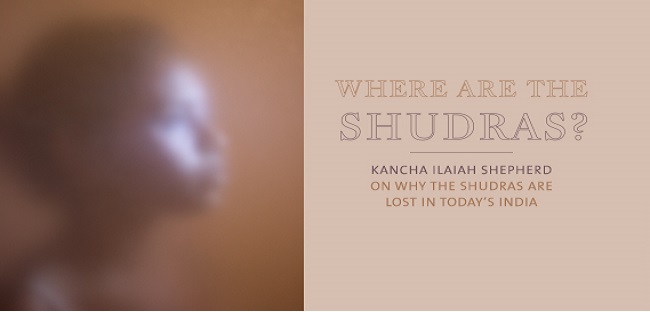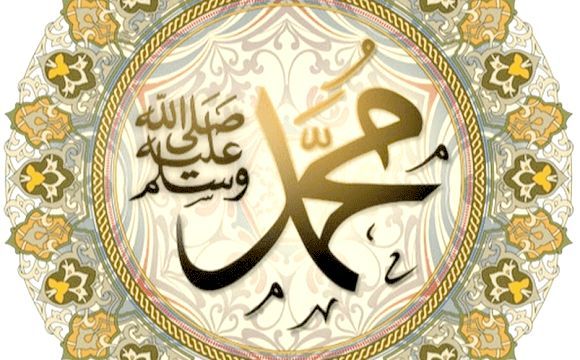This hurts their performance and their post-graduation prospects. Proficiency in only a regional language also restricts them to regional opportunity and discourse. For better or worse, the highest levels of Indian business, bureaucracy, diplomacy, media, education and so much more function primarily in English. A great number of global institutions do so too. Shudras have no space in that world, leave alone Dalits and Adivasis. They are still an effectively illiterate mass in the English-speaking world, where Brahmins and Banias operate on par with Western elites.
The second legacy is an almost complete disinterest in philosophy—even a fear of it. In my experience as a professor, the highest ambitions of Shudra students are to become doctors, engineers, bureaucrats or, at most, politicians—not to become thinkers and writers who can influence societal and national ideas. This extends beyond just Shudra students as well. When I taught at Osmania University in Hyderabad, where most members of the senior faculty are Shudras, my colleagues rarely took a serious interest in philosophical issues. Their concern extended to power, politics and money at the local level, but they never aspired to leave a lasting imprint on knowledge. This is a hangover from the millennia of Brahminical intimidation.
The same hangover affects the Shudras’ approach to English as well. For generations, they were taught to fear Sanskrit, the language of the pundits. Now that the Brahmins have mastered English, in the Shudra mind it has become a pundit language as well. They treat it as a foreign tongue, one that cannot be learnt by agrarian people. This is why even rich Shudras who can afford to put their children in private English-language schools do not always do so.
Meanwhile, the Brahmin-Bania castes have become as jealous of English as they earlier were of Sanskrit. Elite English-language schools and universities—once almost exclusively Christian institutions, but increasingly private enterprises controlled by Brahmins and Banias—have been very resistant to adopting the Mandal reservations. St Stephen’s College in Delhi, for example, has no reservation of seats for OBCs. Its alumni include a long line of prominent Brahmin-Bania intellectuals, but it has never produced a Dalit or Shudra intellectual ready to challenge the Brahmin and Bania hold on Indian life.
This combination of factors could explain why the massive Shudra community has not been able to produce even a single equivalent of Ambedkar—an English-speaking, Western-educated leader of national stature who could write the Shudras into the modern discourse on identity and oppression, as he did for the Dalits. This absence means that Shudra oppression is still not part of the national conversation even among progressive Indians. Like Ambedkar’s father, many Shudras were also in the British army, and could have educated their children in the kinds of British schools that Ambedkar went to. Yet few did. It is beyond my comprehension how Ambedkar’s family found the daring to go beyond the assigned limits of their caste but so many Shudra families failed to do so.
The deepest roots of these Shudra inferiority complexes lie at the spiritual level. They have internalised the idea that they have no place in the highest domains of knowledge, and behind this idea is the ingrained notion of inequality. This is entirely due to the Brahmin-controlled spiritual system, which has convinced the Shudras that they do not have the same rights as the dominant castes even in the eyes of god. The Brahmins’ most powerful weapon to enforce that concept is the priesthood, and they have guarded their exclusive hold over that position more fiercely than any other. No Shudra has ever become a priest at the famous temples in Tirupati or Puri, or any number of lesser Hindu sites. The denial of even the aspiration to priesthood has been central to making the Shudras disinterested in philosophy and intellectual progress, as philosophy has its oldest origins in religious discourse.
Until they overcome this, the Shudras cannot dare to think for themselves, and will continue to submit to Brahmin spiritual, social and political philosophy. Last year, for the first time, a religious board in Kerala followed the same reservation policies that apply to government recruitment in its selection process for temple priests. This meant that 30 of the 62 priests it appointed were Shudras, and six were Dalits. This is a necessary correction to Brahmin hegemony, but the truth is that such steps are unimaginable across much of the country today.
THE SHUDRAS HAVE NEVER BEEN SERIOUS about overcoming their lack of skill in English, or their disinterest in philosophical and intellectual pursuits. This must change if they are to produce intellectuals capable of bringing their continued exclusion from national politics and discourse to an end. But the question remains as to what paths are open to any Shudra intellectuals who are ready to tackle their community’s predicament.
Early on, they will have to make a fundamental choice—to continue their allegiance to Hinduism and the politics that promote it, or to break away from the Hindu fold. To understand this choice, it is useful to compare the trajectories of two communities, the Marathas and the Sikhs.
The Marathas are typical of Shudras who have taken the Neo-Kshatriya path. Their reaction to lowly status has been a caste chauvinism centred on the figure of Shivaji, the seventeenth-century Maratha monarch. Other upper Shudra groups have also been convinced of the notion that each of them produced a great ruler at some point. In the absence of Maratha thinkers, the popular image of Shivaji has been constructed largely by Brahmins to suit their needs. This image emphasises Shivaji’s bravery as a warrior but not his astuteness as a general and politician, and so Maratha assertion emphasises valour over intelligence. It shows nothing of his anti-caste reforms and the Brahmin opposition to him. It highlights his battles with the Mughals and European colonialists but not his appointment of Muslim generals, and so the Marathas take pride in him as an icon of Hindu nationalism.
Today, the Marathas are stalwarts of Hinduism and Hindutva, and a Brahmin-dominated BJP rules Maharashtra while the Banias of Mumbai command the state’s financial capital. Spiritually, they follow the Maharashtrian Brahmins, with no thought of becoming priests themselves. They are demanding that they receive OBC status, but it was their conviction that they are superior to other Shudras that minimised their chances of being added to the OBC list in the first place. The same tricks have been played on many non-OBC Shudras.
The only Shudra intellectual of renown to emerge from Maharashtra was Jotirao Phule, who was born into the Mali caste. But his all-India stature was built by Kanshi Ram, a Dalit leader from Punjab, and not by the Marathas. They do not remember him with pride as he was very critical of the Hindu social and spiritual system, and his legacy was suppressed by the Brahmins and Hindu nationalists. Phule wrote of Shivaji as an anti-caste reformer, but the Marathas have forgotten that. More recently, the Maratha rationalist Govind Pansare wrote of Shivaji as a social reformer too. He was assassinated in 2015.
The only major group of Shudras to successfully escape Brahmin and Bania control is the Sikhs. To do this, they had to completely break away from Hinduism and forge their own spiritual system. They constructed their own scripture, the Guru Granth, and run their own religious centres. They control both the major political forces in Punjab, the Akali Dal and the state unit of the Congress. Unlike the Shudras, the Sikhs have acquired global visibility and are even rising in the power structures of countries such as Canada. Their spiritual independence gave them the base for these achievements. The only other groups with power and prominence in the Indian diaspora are still Banias and Brahmins.
This does not mean that Sikhs are an entirely progressive force. In Sikhism and across Punjab, Dalit Sikhs, who form a large part of the religion and the state, continue to face discrimination from Jat Sikhs, former Shudras who now dominate the religion. But it remains that Brahmin-Bania hegemony is not possible in Punjab today.
The Nairs of Kerala, considered Shudras in the caste system, also present an interesting example. A sizeable portion of them improved their status by converting to Syrian Christianity and embracing English-language education in colonial times. From that base, they extended English-language education to Hindu Nairs as well, and the community has gradually gained prominence in Kerala and beyond. In Karnataka, the Lingayats’ long fight against the Shudra status historically attached to them has culminated in demands that Lingayatism be officially recognised as a distinct religion from Hinduism.
The Marathas, like most Shudras, have not been able to produce gurus and intellectuals of their own because as a community they have never challenged the Brahmin ideology. Phule understood this, and challenged the caste control of Shudra society, but the Marathas did not continue his philosophical critique of Brahminism.
The Shudras still have the option of developing Phule’s thought, laid out in his book Gulamgiri, published in the 1870s. They can add to it Ambedkar’s philosophy, which established a clear political and, importantly, spiritual alternative to Brahminism. If Ambedkar had not made this contribution, the Shudra philosophical position would have been even poorer than it is today.
Another choice for Shudras looking to challenge Brahminism is conversion. The dominant castes—led by the BJP and its ideological controller, the Rashtriya Swayamsevak Sangh— are against this. But history shows that they themselves have used conversion to their gain. In Goa, Bengal and elsewhere, many Brahmins converted to Christianity in the colonial period to gain stature among the colonisers.
The Shudras have the option of rejecting Hinduism for radical anti-caste doctrines or other religions, but in the present situation it would be naïve to expect that massive numbers of them will use it. Many of them, at least for the foreseeable future, will want to keep living as Hindus. These Shudras must demand equal spiritual status, and equal access to the priesthood. They must fight for the right to engage with and interpret Hindu scripture through Shudra eyes. They must insist on free and open Hindu theological schools and colleges, where any Hindu, regardless of caste, can choose to pursue priesthood. It is essential for the Shudras to understand their collective power within Hinduism. Without their numbers, that religion risks collapse. If they do not use their strength, the situation will remain unchanged. Their position will remain like that of the Nairs, who claim to be ardent Hindus but have no intellectual influence on the religion, deferring to the Brahmin priests.
The time has come for Shudras to ask for equality in every sphere, or to seek alternatives in every sphere. If Hinduism does not accept their insistence on spiritual equality, they should consider forming new religions as part of their movement for assertion. They must reject the low status imposed on them by Brahminical thinking, and the notion that offending the dominant castes comes with the risk of bad karma and rebirth. For that, they will have to produce a massive amount of alternative thought and literature that can displace the current paradigm.
Alternative Shudra literature and philosophy must focus on establishing a base for Shudra self-respect, whether within Hinduism or outside of it. The parallels for this kind of writing exist in other movements of oppressed people across the world, from the Black Power movement in the United States to the Dalit movement here in India. These movements have produced histories, novels, films, spiritual discourses and more that reject the degrading images and beliefs of oppressed people that have been handed down to them by dominant groups, and replace them with constructions of their own making. These new ideas are the fuel for social and political action.
For Shudras, self-respect must begin by subverting the Brahminical theory that the work of production is spiritually polluting. What Shudras do, what they make and even what they eat is shown in Hindu religious and philosophical texts as unworthy of divine respect. Historically, they have been so diffident in the face of this assault that they have been convinced that they do not have a culture of their own. But just because this culture has not been written into books does not mean that it is not there.
The Shudras are carriers of a millennia-old culture centred on their agrarian and productive work. Its values are not the sanyasi values of asceticism and inaction, but ones of fertility, creativity and effort. Shudra culture eschews the frequently violent stories of Hindu mythology for tales of material plenty. It replaces the metaphysical obsessions of the Brahmins with an immense knowledge of nature, agriculture and production processes, learnt through scientific observation and practical experience. Through their work, the Shudras have been engaged in medicine, husbandry, engineering and many other productive disciplines. All of this should be recorded and celebrated.
Shudras must insist on the great value of their work and culture. They are producing basic resources—food, clothing, housing, art, music and so on—that allow the survival of the nation. Shudras must ask who contributes more to societal well-being, the labouring Shudra or the ascetic Brahmin. If the culture of productive communities is treated with dignity and respect, they will employ more and more of their energies, further adding to the national good. The suppression of the culture and self-respect of the country’s largest productive and labouring mass means a huge loss of national resources. This understanding should form the core of a new Shudra nationalism.
A new paradigm of Shudra consciousness will go far towards building a national politics outside Brahminism and Bania economics. Besides throwing off their self-denigration, the Shudras will have to redefine relationships between castes within their varna, and also their relationship to oppressed castes and communities beyond it.
If the Shudras want to make their large numbers count on the national level, beyond the confines of their home states and regions, they must construct a pan-Indian Shudra identity, without intra-Shudra discrimination. The Brahminical notion of Shudra inferiority is written to apply to the varna as a whole, so it must be tackled as a whole, not on a caste-by-caste basis.
A change in Shudra consciousness will also affect the state of Dalits and other oppressed groups. Once the Shudras discard the philosophical basis for believing in their inferiority, they will no longer have a basis to believe that other castes are beneath them. Once they stop serving Brahmin and Bania interests, they should see no advantage to intimidating Muslims or Christians. On the contrary, they will find many reasons to stand with all those whom Brahminism wrongs. This should also be part of Shudra nationalism, which should never be antithetical to assertion by Dalits, Adivasis or other groups battling Brahmin and Bania domination.
THERE IS A NEED TO LOOK at Shudra self-denigration and the dominant forms of Indian nationalism and national politics today. Brahmins and Banias have dictated the direction of popular national feeling right from the freedom struggle, and in the absence of their own intellectuals the Shudras have unquestioningly followed those views. Ambedkar raised a dissenting voice to point out that any pursuit of national glory was empty without reform to end the country’s shocking social inequalities, but his perspective was sidelined.
Today, the Shudras are enthusiastic supporters of Hindu nationalism, without realising that it is actually Brahmin-Bania nationalism. The BJP’s Hindutva assures the supremacy of the RSS’s Brahmin ideologues, and its economic policies inflate the profits of giant Bania-owned corporations. The Congress can put forward no economic alternative, and its “secular” nationalism increasingly resembles the BJP’s Brahminical one. Rahul Gandhi, the Congress president, has declared himself a thread-wearing Brahmin, seeming to think that this strategy can endear him to the masses.
Much of Hindu nationalism is built on Shudra oppression and exclusion. The politics of cow protection is one example. The theory of the cow being a sacred animal is the work of Brahmins, who never grazed the animal and never depended on it economically. That burden belonged to the Shudras, but they have no say in constructing that animal’s status. The bans on cattle slaughter since Modi came to power have destroyed the cattle economy, since farmers can no longer sell their animals for economic purposes. But the Shudras have quietly accepted this tragedy, which has damaged the rural economy across the country.
Hindu nationalism has won the Shudras nothing but stagnation. The highest levels of the intellectual, spiritual, political and economic domains remain mainly in Brahmin and Bania hands after Modi became the prime minister. There has been no change in the Shudras’ social or economic status. Hindu nationalism has only further consolidated the power of Brahmin ideology and Bania capital, and the Shudras are protecting it even at their own cost.
Ambedkar wrote in Who Were the Shudras? that Brahminism had rendered the Shudras a “low-class people without civilization, without culture, without respect and without position.” All that has happened since his time has failed to fundamentally alter this deplorable fact. Only a new Shudra consciousness can change it, and set the Shudras, as well as the country, on a better course.

















